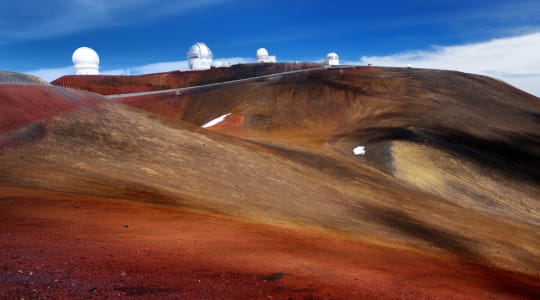
Mauna Kea Observatory is an astronomical observatory located on the summit of Mauna Kea, a dormant volcanic mountain in Hawaii. With an elevation of over 13,000 feet above sea level, the observatory offers some of the clearest and darkest night skies in the world, making it an ideal location for astronomical research and observation.
The observatory was established in the 1960s and has since become one of the world's leading astronomical research facilities, with over a dozen telescopes operated by numerous international institutions. These telescopes are used to study a wide range of astronomical phenomena, including the formation of stars and galaxies, the search for exoplanets, and the study of the universe's origins and evolution.
Mauna Kea Observatory is also known for its efforts to preserve and protect the natural beauty and resources of the surrounding environment. The observatory has strict environmental policies in place to minimize its impact on the local ecosystem, including the use of renewable energy sources and the protection of endangered species and cultural sites.
Explore Near Mauna Kea Observatory
Discover 4 attractions and 3 airports within 75km. Perfect for planning day trips, finding connecting flights, or discovering new destinations to explore during your visit.
Nearby Attractions & Places to Visit
4 destinations within 40.4km - 61.0km from your location




Airports Near Mauna Kea Observatory
3 destinations within 28.4km - 60.4km from your location
Cross-Border Adventures Near Mauna Kea Observatory
Discover cross-border adventures near Mauna Kea Observatory. Explore neighboring countries with similar attractions and extend your travel experience across borders.

